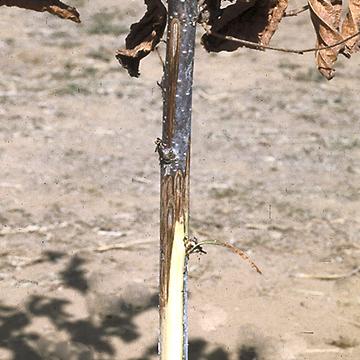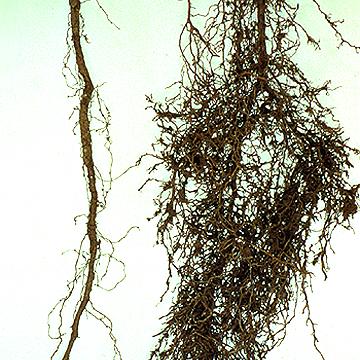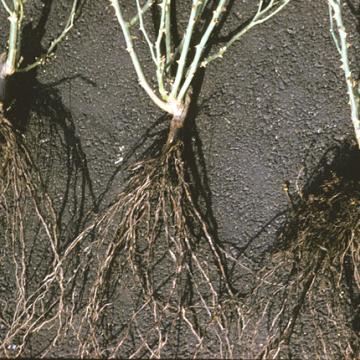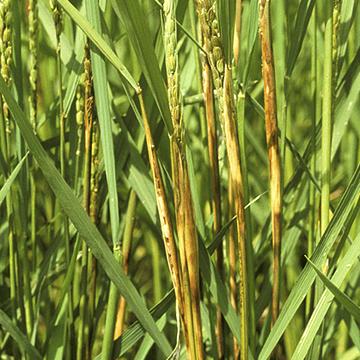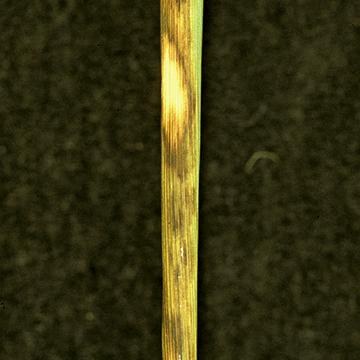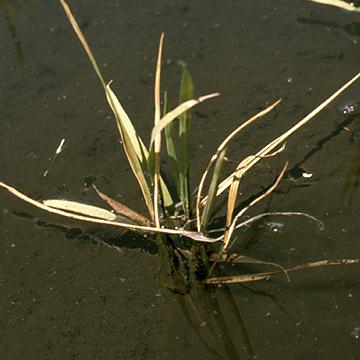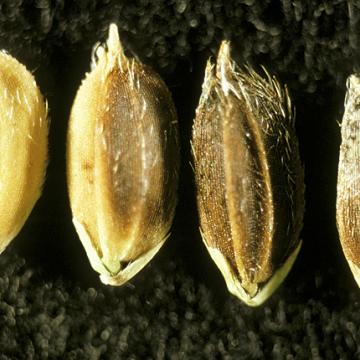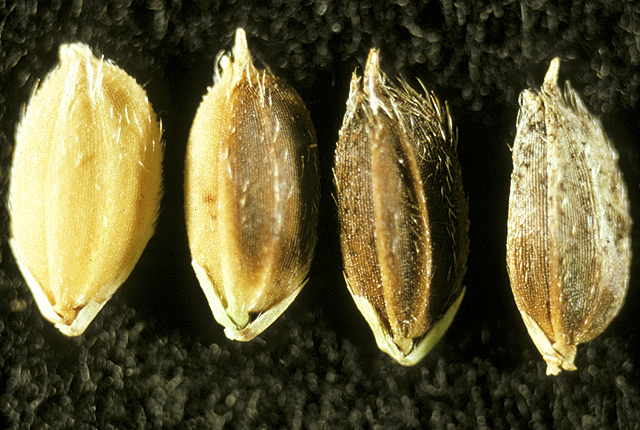DISEASE: Bacterial blight
HOST: Hazelnut
Diseased young tree with discoloration of the cambium. Dieback of young twigs and branches is characteristic. Other typical symptoms are bud and twig necrosis and small, angular or round, water-soaked leaf spots.
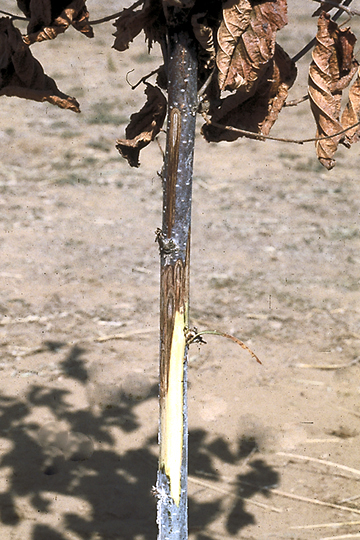
Bacterial blight | Hazelnut
DISEASE: Bacterial blight
HOST: Hazelnut (Corylus americana)
PATHOGEN: Xanthomonas arboricola pv. corylina
SOURCE: J. Pscheidt
DISEASE: Hairy root
HOST: Rose
Hairy root symptoms of many fibrous roots (right). Noninfected root (left).
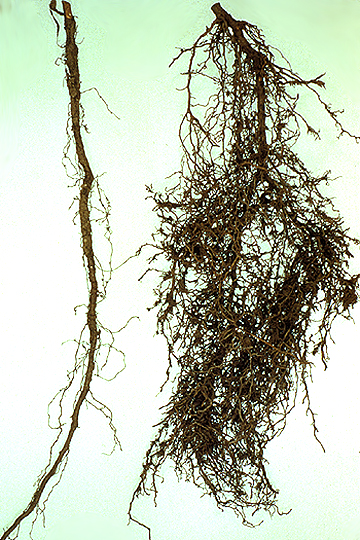
Hairy root | Rose
DISEASE: Hairy root
HOST: Rose (Rosa sp.)
PATHOGEN: Agrobacterium rhizogenes
SOURCE: R. Raabe
DISEASE: Hairy root
HOST: Apple
Crown gall (left) and hairy root (right) caused by Agrobacterium tumefaciens and A. rhizogenes, respectively.

Hairy root | Apple
DISEASE: Hairy root
HOST: Apple (Malus domestica)
PATHOGEN: Agrobacterium rhizogenes
PATHOGEN SYNONYM: Rhizobium sp.
SOURCE: APS
DISEASE: Hairy root
HOST: Rose
Crown gall (left) and hairy root (right) caused by Agrobacterium tumefaciens and A. rhizogenes, respectively. Healthy root (center).
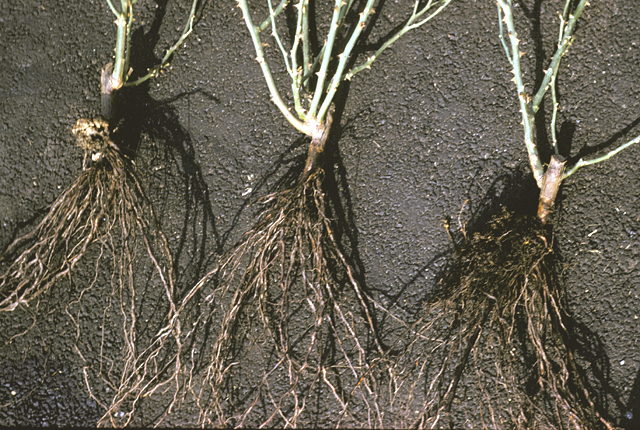
Hairy root | Rose
DISEASE: Hairy root
HOST: Rose (Rosa sp.)
PATHOGEN: Agrobacterium rhizogenes
PATHOGEN SYNONYM: Rhizobium sp.
SOURCE: M. Schroth
DISEASE: Sheath brown rot
HOST: Rice
Disease symptoms typically occur on flag leaf sheaths from booting to heading stage and also on panicles. Water-soaked lesions on glumes turn light brown.
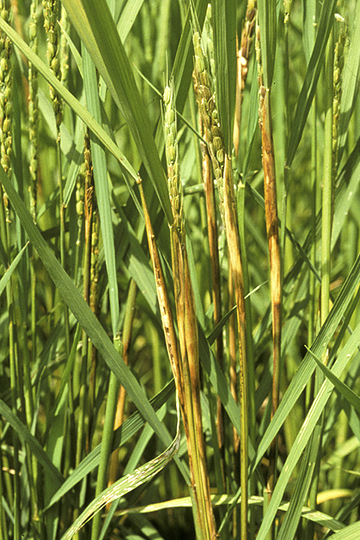
Sheath brown rot | Rice
DISEASE: Sheath brown rot
HOST: Rice (Oryza sativa)
PATHOGEN: Burkholderia fuscovaginae
PATHOGEN SYNONYM: Pseudomonas fuscovaginae
SOURCE: K. Miyajima, M. Goto
DISEASE: Sheath brown rot
HOST: Rice
Close-up of stem lesions.
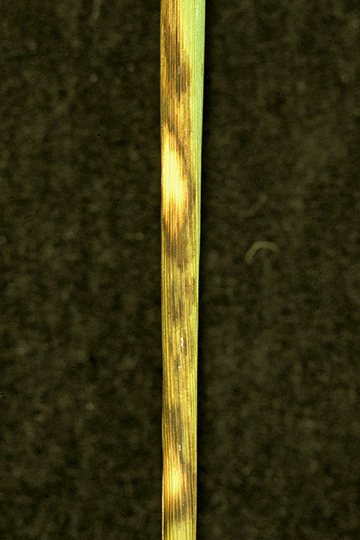
Sheath brown rot | Rice
DISEASE: Sheath brown rot
HOST: Rice (Oryza sativa)
PATHOGEN: Burkholderia fuscovaginae
PATHOGEN SYNONYM: Pseudomonas fuscovaginae
SOURCE: K. Miyajima, M. Goto
DISEASE: Sheath brown rot
HOST: Rice
Seedling with rot symptoms.
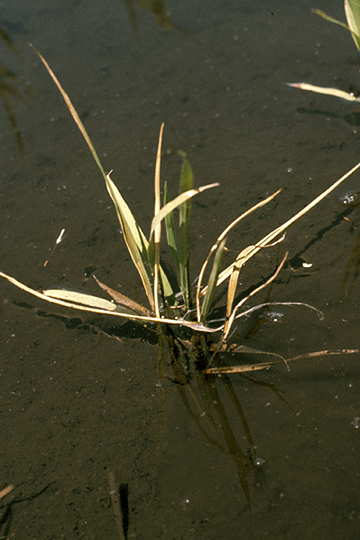
Sheath brown rot | Rice
DISEASE: Sheath brown rot
HOST: Rice (Oryza sativa)
PATHOGEN: Burkholderia fuscovaginae
PATHOGEN SYNONYM: Pseudomonas fuscovaginae
SOURCE: K. Miyajima, M. Goto


